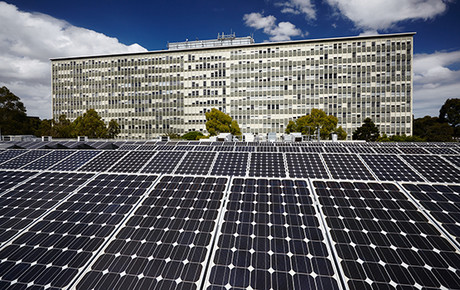Monash Uni builds campus-wide microgrid

Monash University has chosen IT consulting company Indra as a key technology partner in a project to establish a sustainable electricity microgrid at its Clayton campus.
The microgrid infrastructure already incorporates 1 MW of rooftop solar generation capacity. This will be extended by another 3 MW by the end of 2018, while 1 MWh of storage capacity will also be added. By 2020, the university will be generating 7 GWh of electricity — sufficient to power 1000 homes for a year.
The project is part of the university’s goal of achieving net zero emissions by 2030, which goes beyond simply being carbon neutral and will see the institution completely eliminate its dependence on fossil fuels. The microgrid infrastructure will be used as a demonstration of how energy drawn from a range of sources can be intelligently managed and efficiently utilised.
Underpinning the microgrid is Indra’s InGRID.AGM software platform, which will monitor and process power system operations across the grid through a combination of intelligent processing nodes at the edge of the network and a centralised analytics engine. The nodes use powerful Intel processors, over which Indra has developed its InGRID.AGM IoT solution for utilities.
Both elements are connected via Indra’s iSPEED low-latency bus, which enhances openness and interoperability by incorporating support for a wide range of industry-standard communication protocols.
“The ability to have real-time monitoring and management is a critical part of Monash University’s vision that the microgrid will become a centrepiece for research and industry engagement, focused on meeting the new needs of the energy sector,” said Monash University Net Zero Program Director Tony Fullelove.
“By managing the Clayton campus energy demands and providing ancillary services to the Victorian power grid, the Monash microgrid will provide a real-world example of how Victoria can keep its energy system affordable and resilient, particularly during peak periods and extreme weather events, while rapidly transitioning the state to a low-carbon economy.”
Indra Energy Solutions Manager Giovanni Polizzi said effective monitoring and management of energy systems and loads at a network and customer premise level is a key challenge for the Australian electricity sector. The microgrid, supported by the Indra InGRID.AGM platform, will showcase how these challenges can be overcome.
“By operating in a real-world environment, the microgrid will help to provide a clearer understanding of how the energy industry can manage networks with consumer-connected generation, storage and smart technologies,” he said.
Fullelove said Indra was a natural choice for the microgrid project because of the company’s extensive experience in the design and management of complex power infrastructures.
“We recognised that Indra was the only technology provider that could deliver a platform able to provide real-time information and interoperability between different systems,” Fullelove said. “We did not want to be locked into a proprietary system that would bind us to a single technology, and Indra provides us with that flexibility.”
The intelligent nodes are available from a number of Intel technology partners, while the collaboration between Indra and Advantech has brought the UNO 2270 industrial IoT compact gateway model to Monash University.
The university has committed to spend $135 million on energy transformation over the next 13 years, covering energy efficiency measures such as LED lighting, campus electrification, on-site renewable energy and purchase agreements for off-site renewable energy. The resulting energy savings will result in cost savings which are estimated to be worth $15 million a year by 2028.
“The microgrid is an essential to reaching this goal, as it helps the university to accurately control when and how energy is used across the campus,” said Polizzi. “Indra is pleased to be a key technology partner in this leading initiative.”
$25m grant supports cleaner cement production
The upgrades will enable the Berrima Cement Works kiln to source up to 60% of its energy from...
$39m boost to NSW's EV fast charging network
Applications are open for Round 4 of the NSW Government's EV fast charging grants program,...
Agreement unites clean energy providers
Wind and water energy come together as Aula Energy signs a long-term power purchase agreement...








